GardenerHeaven.com is reader-supported. When you buy through links on our site, we may earn an affiliate commission.
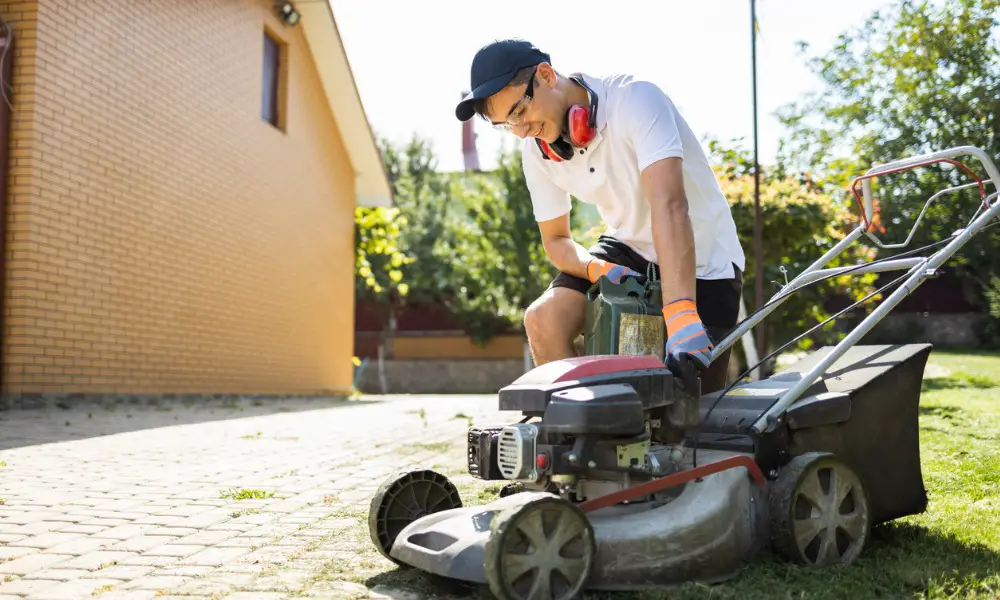
Lawn mower Automatic choke problems can be a frustrating issue. This section will dive into the causes and solutions for these problems, helping you troubleshoot and overcome any challenges you may encounter with your mower’s automatic choke. From understanding the mechanics of the automated choke system to practical tips for troubleshooting, we’ve got you covered. Say goodbye to frustrating starting issues and learn to keep your lawn mower running smoothly.
Understanding Lawn Mower Automatic Choke Problems
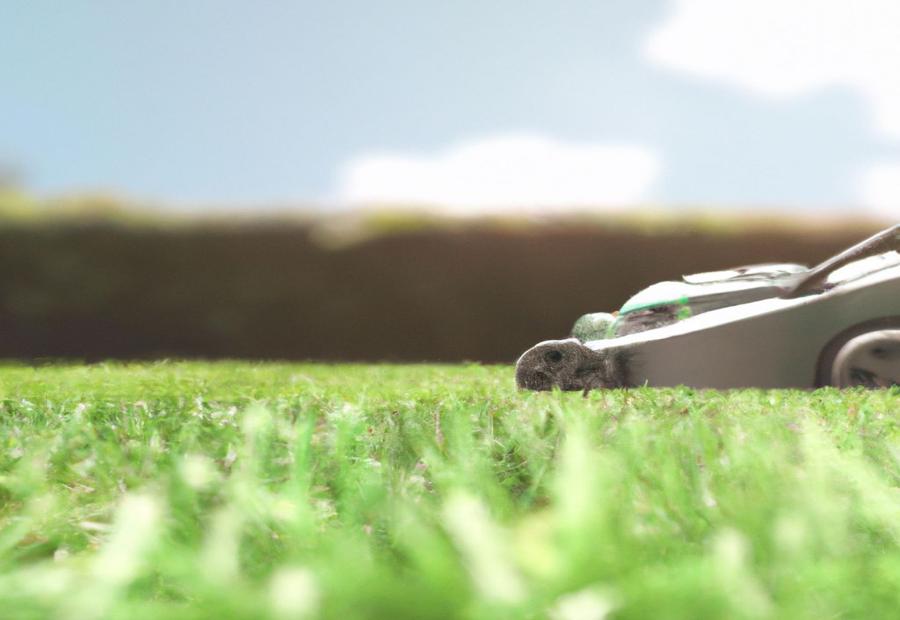
Photo Credits: Gardenerheaven.Com by Jack White
Let’s talk about automatic choke problems in lawn mowers. Knowing these common issues is important for effective troubleshooting and maintenance. It’s better to take preventive measures to avoid unexpected costs.
Tom’s story is a great example. He had trouble starting his mower due to an automatic choke problem. With professional help, the technician replaced the faulty choke thermostat. Tom learned about the importance of understanding these issues and the value of professional assistance.
That’s why it’s essential to be prepared to tackle automatic choke problems. It’s like a never-ending battle with a tiny carburetor superhero!
Common Automatic Choke Problems in Lawn Mowers

Photo Credits: Gardenerheaven.Com by Harold Jackson
Discover the most common automatic choke problems in lawn mowers and find troubleshooting tips and solutions. From starting issues to fuel drain concerns and locked engine complications, we’ll explore the challenges faced with automatic chokes. Plus, we’ll delve into how these problems can affect the gas mileage of your lawn mower. Get ready to tackle these issues head-on and keep your mower in optimal working condition.
Automatic Choke Problems
Automatic choke problems in lawn mowers are issues related to the choke mechanism. This part regulates the fuel going into the engine and adjusts the air-fuel mixture for starting and running.
Problems can damage the starting process, cause fuel drainage, lock the engine, or affect gas mileage. An example is when the choke doesn’t start due to components clogging or misaligning, leading to insufficient fuel reaching the engine.
Another issue is fuel drain. The choke might not close completely after starting, draining excess fuel from the carburetor. This wastes fuel and disrupts engine performance.
An automatic choke that remains closed and not open may also lead to a locked engine. Too much fuel without enough air causes flooding and prevents the engine from turning over.
Faulty chokes can also affect gas mileage. If the choke supplies an improper air-fuel mixture, it causes inefficient combustion and increased fuel consumption.
To diagnose problems, check for blockages or misalignments in the choke system. Cleaning and maintenance can help keep the mechanism in good condition. If this doesn’t work, replacing faulty parts may be needed. Professional assistance may be required for complex repairs.
Automatic Choke Won’t Start
Have you ever experienced an issue where your automatic choke won’t start? It can be very frustrating. Here’s a 4-step guide to help you out:
- Check the Choke Position. Make sure the lever or knob is in the right place. It should be fully engaged when starting a cold engine and released as it warms up.
- Inspect for Blockages. Look out for debris or blockages in the choke plate and air passages. Clean them with a carburetor cleaner.
- Test Choke Spring Tension. Measure if the spring tension is ok with a tension gauge. Consider replacing it if it’s weak or too tight.
- Verify Fuel Delivery. Ensure enough fuel reaches the carburetor by checking fuel lines, filters, and flow from the tank.
These tips should help you fix the issue of your automatic choke not starting. And if you’re still stuck, you may need professional help. One more thing – regular maintenance and cleaning of the choke can prevent these problems.
Automatic Choke Fuel Drain
Having trouble with your lawn mower’s automatic choke fuel drain? Here’s a 3-step guide to help you out:
- Check for leaks. Inspect fuel lines and connections for any signs of cracks or damage. Make sure all parts are securely tightened. Replace any faulty parts immediately.
- Clean or replace the fuel filter. A clogged filter can stop proper fuel flow and cause drainage. Remove it and clean it or replace it.
- Adjust the carburetor. Incorrect settings can lead to fuel drain problems. Check your mower manual for instructions on adjusting the carburetor and making necessary changes.
Remember to:
- Follow the manufacturer’s maintenance schedule for your mower. Clean or change air filters, oil, etc.
- Use high-quality gasoline that’s suitable for small engines. Avoid contaminated fuel.
- Seek help from a professional technician if needed. They can provide expert advice and make sure the issue is fixed correctly.
Following these tips, keep your mower running smoothly and prevent the automatic choke from draining fuel!
Automatic Choke Locked Engine
The automatic choke-locked engine problem is a real bummer! It happens when the automatic choke mechanism in a lawn mower fails to disengage after starting, causing the engine to stall.
To fix it, here’s what you can do:
- Check the Choke Lever. Ensure it is in the ‘run’ or ‘open’ position.
- Inspect the Choke Plate to see if it’s stuck or moving freely.
- Check the tension of the choke spring.
- Clean Carburetor Jets.
- Look at Vacuum Lines for any leaks.
- Adjust the Idle Speed Screw.
Following these steps should help you fix the automatic choke-locked engine problem. Remember to do regular maintenance and inspections to prevent it from happening again.
Automatic Choke Gas Mileage
Auto Choke Gas Mileage is critical to a lawn mower’s fuel efficiency. Issues with the auto choke can result in increased fuel consumption. A lousy setting may cause the engine to run rich, using more fuel. The choke should be adjusted correctly and regularly maintained to optimize gas mileage. Taking care of these factors can enhance the mower’s performance and longevity while minimizing fuel use. It’s wise to address any choke issues promptly for optimal gas mileage and efficient operation. Diagnosing auto choke issues can help identify mysterious choking habits.
Diagnosing Automatic Choke Problems
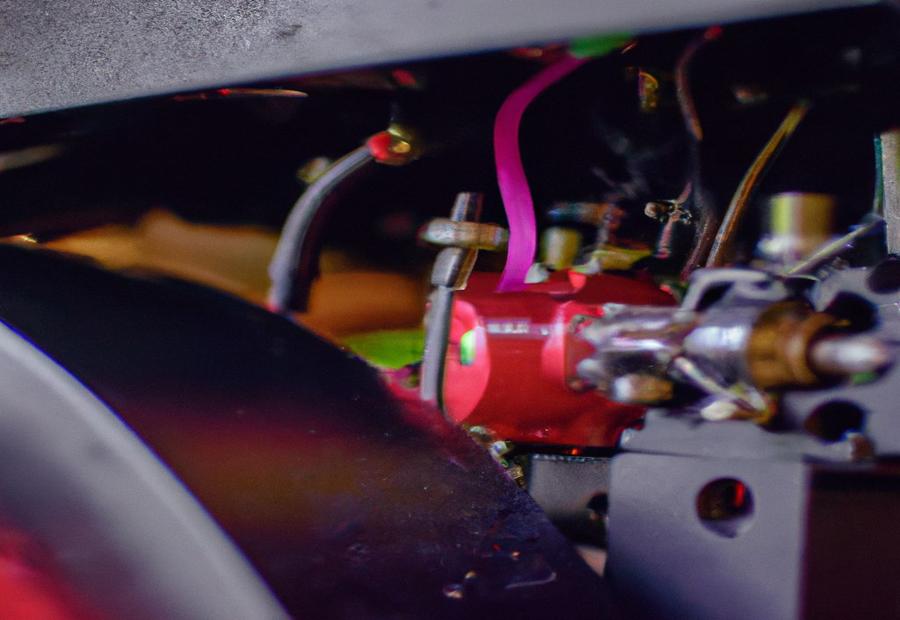
Photo Credits: Gardenerheaven.Com by Billy Adams
Are you diagnosing automatic choke problems in your lawn mower? Let’s dive into troubleshooting tips and checking components to help you identify and resolve those pesky issues. Discover practical solutions backed by expert advice from the reference data provided. Don’t let your automatic choke problems slow you down – get your mower running smoothly again in no time!
Troubleshooting Tips
Tackle automatic choke troubles with these helpful tips!
- Check for loose connections or frayed wires.
- Inspect the choke plate for dirt and debris.
- Make sure it opens and closes without any problems.
- Adjust the choke linkage if needed.
Follow these tips to save time and money on repairs. Additionally, clean and maintain the system regularly to prevent clogging or buildup of debris. Regular maintenance, like cleaning and replacing faulty components, will help prolong its lifespan. Before your mower has problems, check the components thoroughly. These tips provide the skills to handle issues with the automatic choke system.
Checking Components
Check those components of your lawn mower’s automatic choke! Diagnose and repair any issues by inspecting the system’s various parts. Look for any damage or wear on the choke plate, linkage, thermostat, and solenoid. Clogged jets can also prevent proper functioning, so clean or replace them. By regularly checking these components, you can identify any faulty parts and take appropriate action to fix them. Additionally, check for damage or wear on gaskets, seals, and wiring connections. This will ensure your lawn mower runs optimally and avoids costly repairs. So, don’t choke on high repair bills – take the time to inspect the automatic choke system!
Repairing Automatic Choke Problems
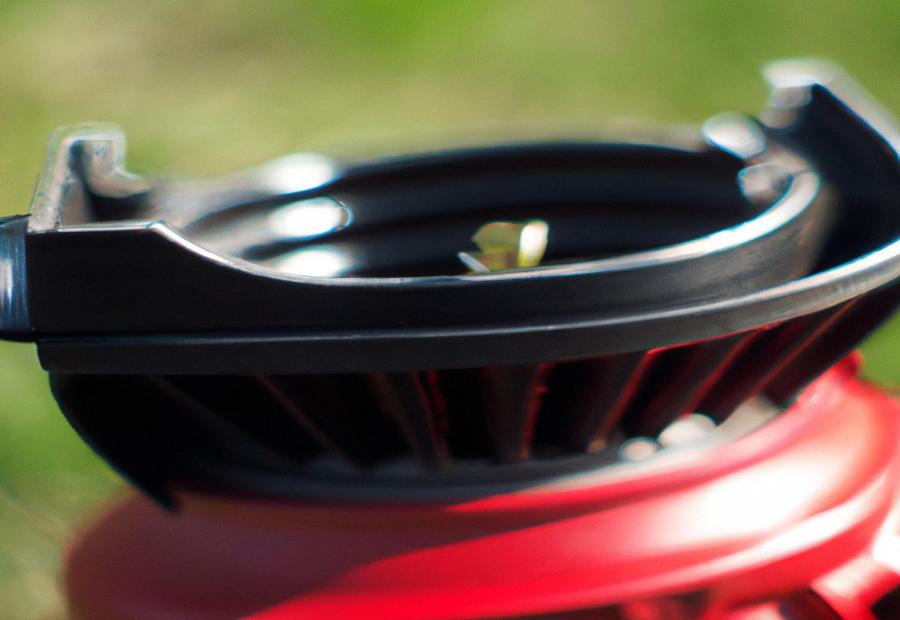
Photo Credits: Gardenerheaven.Com by Jesse Taylor
This section covers you when tackling automatic choke problems in your lawn mower. Whether it’s performing necessary cleaning and maintenance, replacing faulty components, or seeking professional help, we’ll provide you with troubleshooting tips and solutions to resolve these frustrating issues. So, let’s roll up our sleeves and get your lawn mower’s automatic choke back on track.
Cleaning and Maintenance
- Regularly clean the choke plate and linkage using a carburetor cleaner to avoid blockages.
- Check the fast idle cam adjustment for smooth running.
- Clean the air filter, fuel lines, and fuel tank to prevent clogs.
- Lubricate all moving parts of the automatic choke system.
These practices will help your lawn mower’s choke system last.
Do these chores regularly and consult the user manual for specific instructions. Revive your mower with some maintenance and loving care!
Replacing Faulty Components
Replace faulty components in the automatic choke with three easy steps!
- Identify the problematic component: Diagnose the specific part that needs replacing. Check reference data for troubleshooting help. This will help you find the right replacement.
- Source the replacement part: Find a part suitable for your lawn mower’s make and model. Using genuine parts ensures optimal performance.
- Replace the faulty component: Uninstall the old component. Refer to your lawn mower’s manual or online resources for guidance. Install the new part securely, making sure all connections are tightened.
Address faulty components quickly! Neglecting worn-out or defective parts can lead to poor gas mileage, difficulties starting the engine, or even complete failure of the automatic choke system. Regular maintenance and timely replacements are essential for smooth and efficient functioning.
Seeking Professional Help
When complex auto-choke issues arise in your lawn mower, it’s best to get professional help. Experts have the skills and knowledge to diagnose and fix problems with the auto-choke accurately. They thoroughly troubleshoot, check all parts for malfunctions, and advise on cleaning, maintenance, or replacement of faulty parts.
Fixing auto-choke issues without professionals can cause more damage or a wrong diagnosis. Professionals use special tools and equipment to ensure proper repair. With their experience, they can quickly find specific problems and give tailored solutions.
Getting professional help saves time and effort. Trial-and-error won’t work, but experts can efficiently diagnose and solve problems. Plus, they can advise on preventing future issues and optimizing performance.
Find a reputable and qualified professional for auto-choke issues. Read reviews or ask trusted sources for recommendations. Professional help will prolong the lifespan and maintain the optimal performance of your lawn mower’s auto-choke.
Conclusion: Ensuring Proper Functioning of the Automatic Choke in Your Lawn Mower
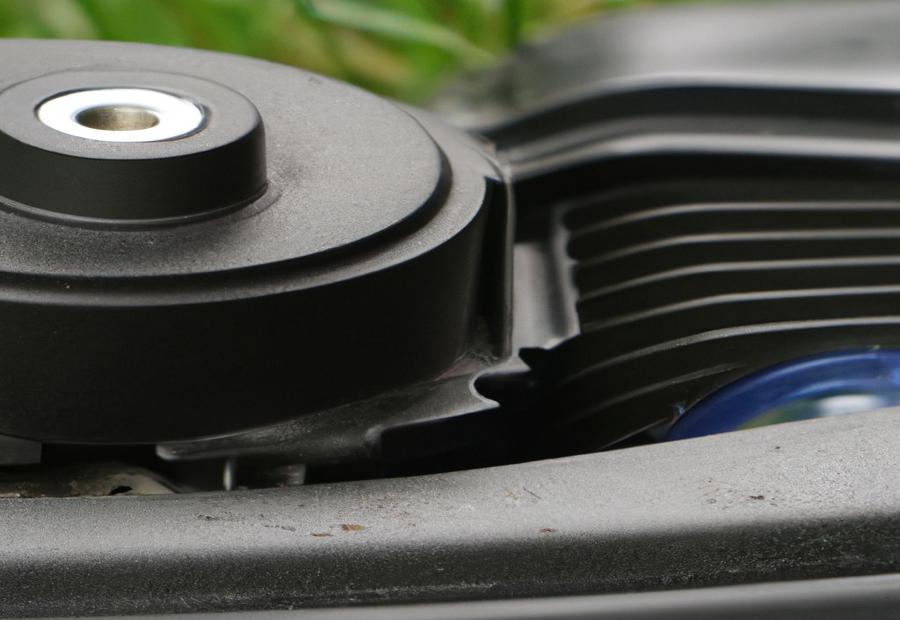
Photo Credits: Gardenerheaven.Com by John Rivera
The automatic choke in your lawn mower is essential for smooth operation. To troubleshoot problems, inspect the choke plate, heat tube, and other components. Check the spring tension and replace it if necessary. Understand the correct starting procedure, including the use of the choke. Consult the manufacturer’s manual for specific instructions.
Regular servicing and tune-ups can identify underlying issues. Take proactive measures to avoid costly repairs and ensure the proper functioning of the automatic choke. Clean and inspect the choke regularly, check the spring tension, and understand the correct starting procedure. Don’t wait for problems to arise. Take the necessary steps now and enjoy smooth starts and optimal performance.
Some Facts About Lawn Mower Automatic Choke Problems: Troubleshooting Tips and Solutions:
- ✅ Lawnmower automatic chokes regulate the air and fuel mixture when starting the engine. (Source: Team Research)
- ✅ Common problems with automatic chokes include the butterfly not closing properly, flooding of the choke system, and the choke getting stuck. (Source: The Austle)
- ✅ Troubleshooting tips for automatic choke problems include adjusting the choke mechanism, pulling the cord to start the engine on the right track, and regular lubrication and proper storage to prevent sticking chokes. (Source: The Austle)
- ✅ Automatic choke issues can cause starting problems, decreased gas mileage, increased emissions, frequent stalling, and potential engine damage. (Source: Tractor Problems)
- ✅ Repairing automatic choke problems may involve inspecting and potentially replacing the air vane, air vane spring, thermostatic cut off, and connection bars. (Source: Lawnmower Guru)
FAQs about Lawn Mower Automatic Choke Problems: Troubleshooting Tips And Solutions
FAQ 1: Why won’t my lawnmower start?
Answer: Your lawnmower won’t start if the choke butterfly is not closing properly. This can be fixed by adjusting the choke mechanism.
FAQ 2: What should I do if my lawnmower engine stops running after starting?
Answer: If your lawnmower engine stops running shortly after starting, it could be due to the flooded automatic choke system. To solve this, pull the cord until the engine is on the right track of starting and then switch to half-choke.
FAQ 3: What should I do if the automatic choke on my lawnmower is stuck and doesn’t move?
Answer: If the automatic choke on your lawnmower is stuck and doesn’t move, it could be caused by rusting of the choke rod or choke piece failure. Regular lubrication and proper storage can prevent this issue.
FAQ 4: Should the choke be open or closed when starting a lawnmower?
Answer: When starting a lawnmower, the choke should be closed. This helps regulate the air and fuel mixture to assist with starting.
FAQ 5: What are the consequences of leaving the choke on for too long?
Answer: Leaving the choke on for too long can result in decreased gas mileage, increased emissions, frequent stalling, and potential engine damage. Using the choke only as needed during the starting process is essential.
FAQ 6: How can I adjust the choke on my Husqvarna lawn mower?
Answer: To adjust the choke on your Husqvarna lawn mower, locate the choke lever and move it to the “open” position. Let the engine run briefly before moving the lever to the “closed” position. Adjusting the choke can help ensure the proper starting and running of the mower.




